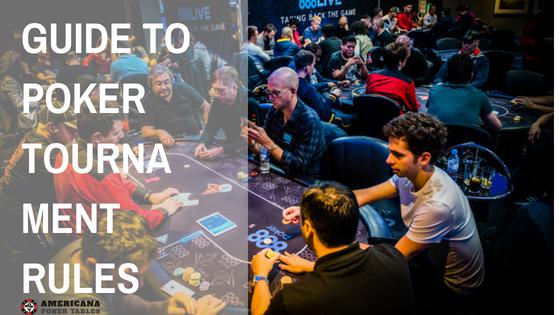Poker tournaments are a great way to start playing poker. Unlike cash games, you only have to risk the buy-in at the outset – and that small buy-in could translate into mind-boggling amounts of cash.
One of the first things you should note before playing in any tournament is the structure, which will greatly affect how you should play. Also, the rules for each tournament could diverge from the basics depending on how they are set up.
However, there are some standard rules that will apply to the majority of ones you may play – whether live or online.
Registration and Seating
Whether you’re playing live or online, you should strive to arrive on time or early even to your chosen event.
Why? At live events, you may need to find your seat. Also, if you arrive late, the rules state that you will have to pay all the blinds and/or antes even if you’re not there. Paying for orbits where you don’t play a hand isn’t the best way to get started.
If you don’t show up at the start of a live event, your stack can be removed from the table and placed out of play at some point – usually after a new betting level has started or half-an-hour after it has started.
Seating is random. However, by being there at the start, you also have more of an opportunity to settle in and get to know your opponents.
Eliminations and Table Re-Balancing
Online, table re-balancing happens quickly and efficiently with players being moved around to ensure that each table has the same number of players. This rule is in place to ensure that the tournament is fair, and that no player has an edge since there are fewer opponents at their table.
As players are eliminated, one-by-one, tournament directors try to ensure that table size is kept within one to two players.
Blinds and Tournament Structure
In every tournament, the action will revolve around the blinds, regardless of the tournament structure itself.
The blinds will go up at regular, predetermined intervals - according to the rules. These intervals will not change during the event, helping to set the length of the event as well as the pace at which players are eliminated.
Keep Your Hands to Yourself
Although this one applies to live games, it’s still an important rule to note. One of the big no-no’s that will break any tournament rule is exposing your cards while you’re in a hand. Doing this is frowned upon and is considered bad poker etiquette.
If you want to show a bluff after a hand has ended, that’s fine. However, keeping your cards concealed as well as not taking a peek at your neighbour’s holding is best.
Showdown Reveal
If you’re in a hand at showdown, you will have to show your winning hand to collect the pot. This rule is in place to prevent collusion, and also to make sure that the right player receives the pot.
There is usually an order to which hands should be shown down on a checked river. However, the standard practice, when there is betting, is that the hand that is called shows first. The player that makes the call has the option of showing their hand or mucking it.
These basic rules should put you in good stead when it comes to playing tournaments. Keep in mind that there are many rules, so you should familiarize yourself with them before playing a tournament.


